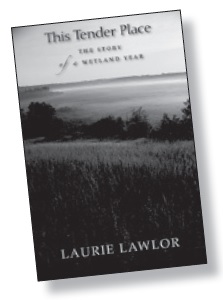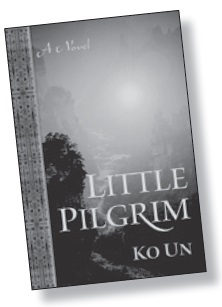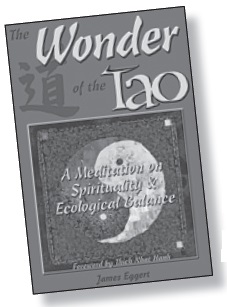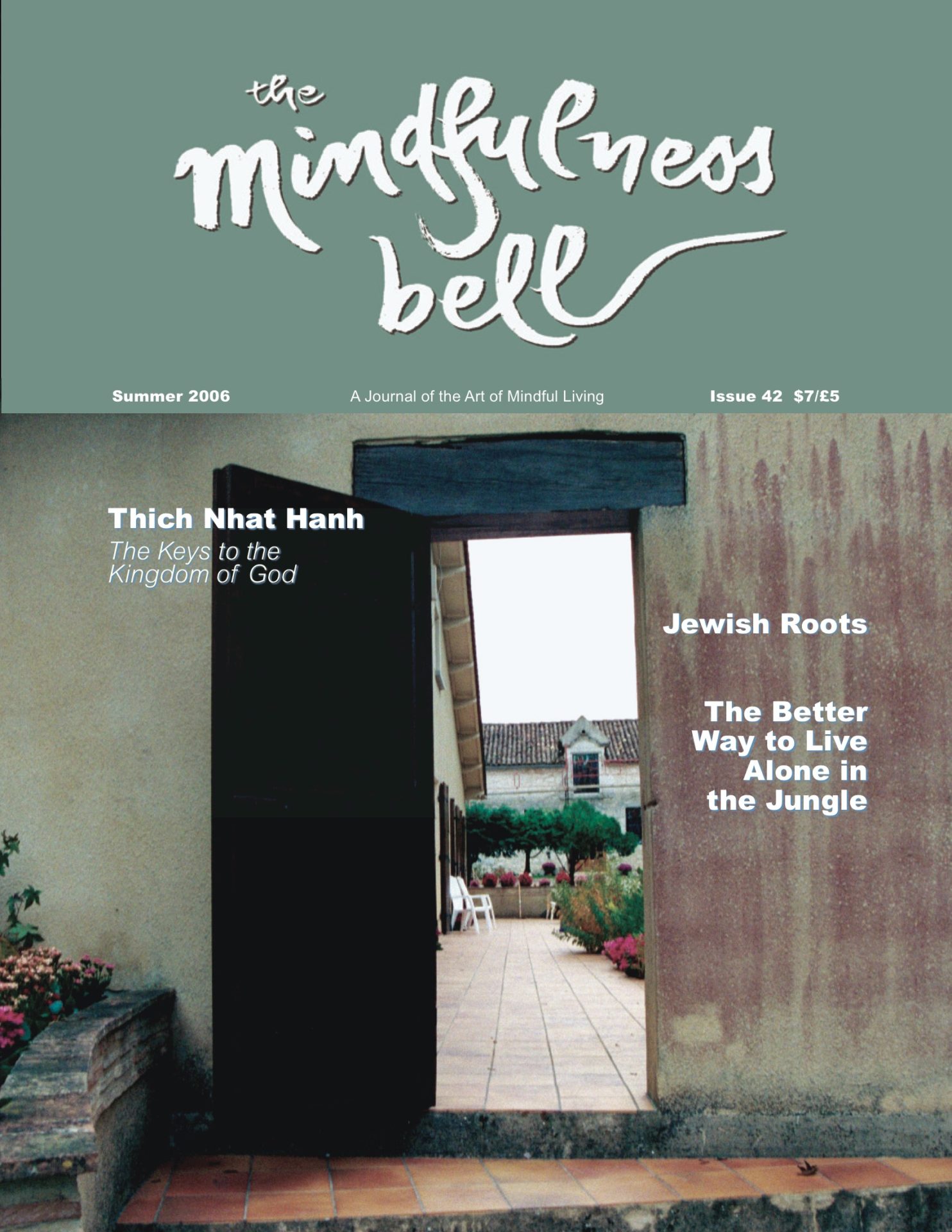
This Tender Place
The Story of a Wetland Year
By Laurie Lawlor
University of Wisconsin Press, 2005 Hardcover, 166 pages, $26.95
Reviewed by Janice Rubin
In a volume of fewer than 200 pages, Laurie Lawlor, author of thirty-three books for children and adults, writes the story of a love affair with a swamp that is ultimately a clarion call to preserve our wetlands if we wish to ensure adequate supplies of potable water.

This Tender Place
The Story of a Wetland Year
By Laurie Lawlor
University of Wisconsin Press, 2005 Hardcover, 166 pages, $26.95
Reviewed by Janice Rubin
In a volume of fewer than 200 pages, Laurie Lawlor, author of thirty-three books for children and adults, writes the story of a love affair with a swamp that is ultimately a clarion call to preserve our wetlands if we wish to ensure adequate supplies of potable water. Lawlor and her husband, Jack, bought the eleven-acre property in southeast Wisconsin as a way to “reconstruct” themselves following the deaths of their fathers within months of each other. In spring they planted a pin oak, beneath which were placed her father’s ashes.
This Tender Place is permeated with Lawlor’s deep practice of mindfulness in nature. As a Dharma teacher who has received the Lamp Transmission from Thich Nhat Hanh, her stories reflect her ten-year intimacy with the vegetation, animal life, and minerals in this 14,000-year-old fen. In an enchanting tableau of the four seasons of the year, beginning with winter and going back to the start of the Ice Age, she chronicles the gradual formation of the current wetlands landscape and its seasonal changes.
We are with her as she travels by kayak or canoe along the streams and passageways of the fen to the lake, or walks the paths and slogs through mud, observing the changes in water quality, vegetation, and animal life at each season of the year. We note the coming of spring in the water bubbling up through cracks in the ice on the marshes as winter ends, the incipience of summer in the return of mated pairs of cranes in early spring, the crackling of the drying water-lily pads and the presence of scum, white swan feathers, and dead insects on the pond foretelling the coming autumn and “the long slide into the beginning of silence.” On her last kayaking trip of the year, she finds herself cutting through a thin film of ice; the turtles and frogs are gone, vegetation is floating loose, and snow begins to fall.
Unrestricted hunting led to the extinction in the area of elk, white-tail deer, black bear, wild turkey, sandhill cranes, and massasauga rattlesnakes by 1850. Past practices of draining wet areas to create land that can be farmed or developed for housing, shopping centers, or industrial uses have resulted in the diminished availability of fresh water as the population grows. Grassroots conservancy groups are now involved in promoting the reclamation and preservation of watersheds, prairies, woodlands, shorelines, and other sensitive areas from human indifference.
We feel, with Lawlor, a growing sense of oneness with the environment as she makes her way. Twenty-two photographs, most of them taken by her, reflect the peaceful aspect of this tender place even when animal and plant life are most abundant. For this, if for no other reason, wetlands areas must be preserved as places where people can find refuge from the hurly-burly of everyday life.

Little Pilgrim
By Ko Un
Parallax Press, 2005 Softcover, 381 pages, $18.95
Reviewed by Judith Toy
A novel twenty-two years in the writing by celebrated Korean poet and former Buddhist monk Ko Un (pronounced ‘Go Oon’), this book is a Dharma treasure brought to us by translators Brother Anthony of Taizé and Young-Moo Kim. The protagonist is a tenyear-old boy, Sudhana, who during his life’s fantastical journey, morphs more than once into an adult and even once into a leper.
He encounters fifty-three teachers in all, sometimes in dreams, from gods to singing snails to a boy who becomes a girl, to bums and bodhisattvas (sometimes the bums are bodhisattvas), a giant, an underworld, heavenly realms, vanishing beings, and a kite that points the way on his travels.
Ko Un’s fiction without a plot is based on the thirty-ninth, the last and longest section of the Avatamsaka Sutra, known as the Garland Sutra––a teaching that’s had an extraordinary impact on East Asian Buddhism since its introduction into China in the sixth century.
Supposedly derived from a series of sermons by the historical Gautama Buddha––or possibly by his disciple, the bodhisattva of Great Action, Samantabhadra, Ko Un’s poetic rendering of the pilgrim’s journey is like a string of wisdom pearls.
Like St. Exupery’s Little Prince, who always felt he was at home, the little pilgrim Sudhana teaches us two crucial lessons: how to see the signposts that show us where to go next on our life’s pilgrimage; and how to let go. At each stop, someone or something directs the boy to his next destination. He only hears them because this child without parents or roots is able to move through the universe with an open heart. He simply allows each teaching to enter him, and then the young pilgrim moves on.
The setting is India in the Gautama Buddha era, and some place names are familiar to us from the life of the Buddha. While the Buddha is not a character in the novel, there are increasingly frequent references to his teachings as the boy’s journey unfolds. To fully receive the sweep of Ko Un’s novel as a metaphor for our lives, it’s probably best to read it through at once, rather than piecemeal. Readers will want to linger at the striking papercut illustrations by Jason DeAntonis that pepper the text.
As a sangha body we can apply these two lessons––trusting the way enough to be available to the teachings that abound in every moment and becoming still enough to know where as a sangha our path is leading us next; and allowing ourselves to let go of the many people who come and go in a sangha, loving them in a nonattached way. Allowing the comings and goings to happen without any resistance, without clinging. With the Buddha, Ko Un shows how to let go and join the dance!

The Wonder of the Tao
A Meditation on Spirituality and Ecological Balance
By James Eggert
Published by Humanics, Lake Worth, Florida Hardcover; 90 pages; $14.95
Reviewed by Hope Lindsay and Barbara Casey
James Eggert is an emeritus faculty member of the University of Wisconsin. As both economist and ecologist, Eggert offers a singular perspective on the workings of our world and our relationships in it. For example, he suggests that we consider the concept of market capitalism as a flawed gemstone. Inspecting it for defects from the viewpoint of an economist and then an ecologist, Eggert offers a vision to bring balance and harmony back into our economic system.
Eggert’s simple stories offer a wise view of life and practical methods for deepening our understanding of interbeing. To help develop balance and an increased awareness of other species, he describes simple t’ai chi exercises that embody qualities of bear, crane, monkey, deer, and tiger. Opening our eyes to a larger view of the world, Eggert describes the unfolding of the universe, through stellar contractions and expansions, the origin of water, the moon’s influence, and the development of life forms.
Each chapter begins with a verse from the Tao Te Ching, a slim volume written by Lao Tzu 2,400 years ago, and woven into the heart of Buddhist teachings. The wisdom of simplicity, balance, and letting go show us a way through the complexities of modern life and the confusion of searching for happiness outside ourselves. The last chapter, “The Wonder of the Tao,” begins with the verse:
“If you don’t realize the source, You stumble in confusion and sorrow… Immersed in the wonder of the Tao, You can deal with whatever life brings you, And when death comes, you are ready.”
Eggert gently leads us back to the source of true happiness, through his stories of connecting with nature and seeing the world in all its remarkable beauty. In the book’s foreword, Thich Nhat Hanh writes, “Please enjoy this offering of our friend, James Eggert, as an invitation to enter into a deep relationship with our home the earth and all her creatures, to cultivate our awakened wisdom to find harmony and balance.”
The Wonder of the Tao is generously illustrated with calligraphy and brush paintings by Li-chin Crystal Huang. A lovely snapshot of one man’s walk in mindfulness through our world, this book reflects the simplicity and fullness of which it speaks.

